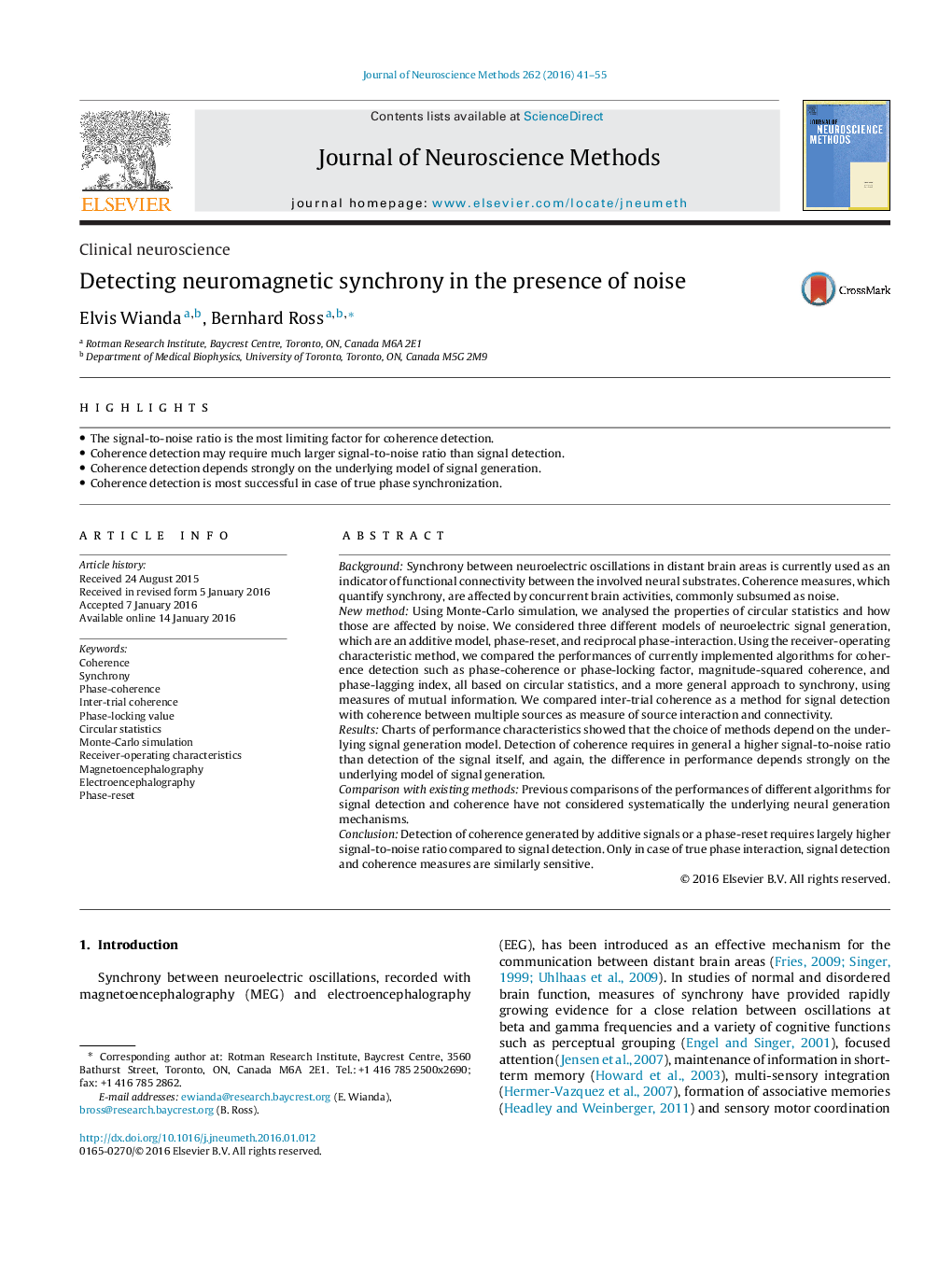| کد مقاله | کد نشریه | سال انتشار | مقاله انگلیسی | نسخه تمام متن |
|---|---|---|---|---|
| 6267909 | 1614607 | 2016 | 15 صفحه PDF | دانلود رایگان |
- The signal-to-noise ratio is the most limiting factor for coherence detection.
- Coherence detection may require much larger signal-to-noise ratio than signal detection.
- Coherence detection depends strongly on the underlying model of signal generation.
- Coherence detection is most successful in case of true phase synchronization.
BackgroundSynchrony between neuroelectric oscillations in distant brain areas is currently used as an indicator of functional connectivity between the involved neural substrates. Coherence measures, which quantify synchrony, are affected by concurrent brain activities, commonly subsumed as noise.New methodUsing Monte-Carlo simulation, we analysed the properties of circular statistics and how those are affected by noise. We considered three different models of neuroelectric signal generation, which are an additive model, phase-reset, and reciprocal phase-interaction. Using the receiver-operating characteristic method, we compared the performances of currently implemented algorithms for coherence detection such as phase-coherence or phase-locking factor, magnitude-squared coherence, and phase-lagging index, all based on circular statistics, and a more general approach to synchrony, using measures of mutual information. We compared inter-trial coherence as a method for signal detection with coherence between multiple sources as measure of source interaction and connectivity.ResultsCharts of performance characteristics showed that the choice of methods depend on the underlying signal generation model. Detection of coherence requires in general a higher signal-to-noise ratio than detection of the signal itself, and again, the difference in performance depends strongly on the underlying model of signal generation.Comparison with existing methodsPrevious comparisons of the performances of different algorithms for signal detection and coherence have not considered systematically the underlying neural generation mechanisms.ConclusionDetection of coherence generated by additive signals or a phase-reset requires largely higher signal-to-noise ratio compared to signal detection. Only in case of true phase interaction, signal detection and coherence measures are similarly sensitive.
Journal: Journal of Neuroscience Methods - Volume 262, 15 March 2016, Pages 41-55
